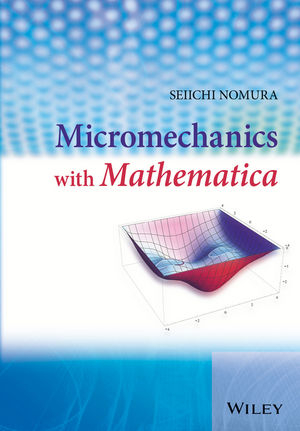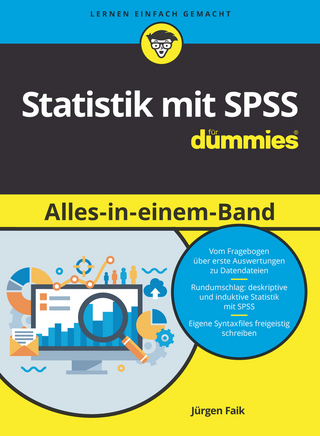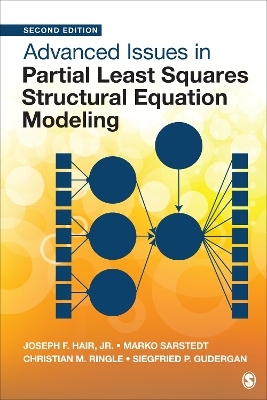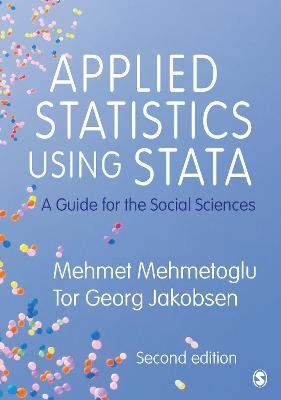
Micromechanics with Mathematica
John Wiley & Sons Inc (Verlag)
978-1-119-94503-1 (ISBN)
Demonstrates the simplicity and effectiveness of Mathematica as the solution to practical problems in composite materials.
Designed for those who need to learn how micromechanical approaches can help understand the behaviour of bodies with voids, inclusions, defects, this book is perfect for readers without a programming background. Thoroughly introducing the concept of micromechanics, it helps readers assess the deformation of solids at a localized level and analyse a body with microstructures. The author approaches this analysis using the computer algebra system Mathematica, which facilitates complex index manipulations and mathematical expressions accurately.
The book begins by covering the general topics of continuum mechanics such as coordinate transformations, kinematics, stress, constitutive relationship and material symmetry. Mathematica programming is also introduced with accompanying examples. In the second half of the book, an analysis of heterogeneous materials with emphasis on composites is covered.
Takes a practical approach by using Mathematica, one of the most popular programmes for symbolic computation
Introduces the concept of micromechanics with worked-out examples using Mathematica code for ease of understanding
Logically begins with the essentials of the topic, such as kinematics and stress, before moving to more advanced areas
Applications covered include the basics of continuum mechanics, Eshelby's method, analytical and semi-analytical approaches for materials with inclusions (composites) in both infinite and finite matrix media and thermal stresses for a medium with inclusions, all with Mathematica examples
Features a problem and solution section on the book’s companion website, useful for students new to the programme
Seiichi Nomura, The University of Texas at Arlington, USA Professor Nomura studied his BSc and MSc at the University of Tokyo, Japan before completing his PhD at the University of Delaware. He is now Professor in the Department of Mechanical and Aerospace Engineering at the University of Texas at Arlington, USA. Professor Nomura has undertaken research on the analysis of mechanical and thermal properties of heterogeneous materials including composite materials and functionally graded materials (FGMs) and has published extensively in this area.
Preface ix
About the Companion Website xi
1 Coordinate Transformation and Tensors 1
1.1 Index Notation 1
1.1.1 Some Examples of Index Notation in 3-D 3
1.1.2 Mathematica Implementation 3
1.1.3 Kronecker Delta 6
1.1.4 Permutation Symbols 9
1.1.5 Product of Matrices 10
1.2 Coordinate Transformations (Cartesian Tensors) 11
1.3 Definition of Tensors 13
1.3.1 Tensor of Rank 0 (Scalar) 13
1.3.2 Tensor of Rank 1 (Vector) 14
1.3.3 Tensor of Rank 2 15
1.3.4 Tensor of Rank 3 17
1.3.5 Tensor of Rank 4 17
1.3.6 Differentiation 19
1.3.7 Differentiation of Cartesian Tensors 20
1.4 Invariance of Tensor Equations 21
1.5 Quotient Rule 22
1.6 Exercises 23
References 24
2 Field Equations 25
2.1 Concept of Stress 25
2.1.1 Properties of Stress 29
2.1.2 (Stress) Boundary Conditions 30
2.1.3 Principal Stresses 31
2.1.4 Stress Deviator 35
2.1.5 Mohr’s Circle 38
2.2 Strain 40
2.2.1 Shear Deformation 47
2.3 Compatibility Condition 49
2.4 Constitutive Relation, Isotropy, Anisotropy 50
2.4.1 Isotropy 52
2.4.2 Elastic Modulus 54
2.4.3 Orthotropy 56
2.4.4 2-D Orthotropic Materials 57
2.4.5 Transverse Isotropy 57
2.5 Constitutive Relation for Fluids 58
2.5.1 Thermal Effect 58
2.6 Derivation of Field Equations 59
2.6.1 Divergence Theorem (Gauss Theorem) 59
2.6.2 Material Derivative 60
2.6.3 Equation of Continuity 62
2.6.4 Equation of Motion 62
2.6.5 Equation of Energy 63
2.6.6 Isotropic Solids 65
2.6.7 Isotropic Fluids 65
2.6.8 Thermal Effects 66
2.7 General Coordinate System 66
2.7.1 Introduction to Tensor Analysis 66
2.7.2 Definition of Tensors in Curvilinear Systems 68
2.7.3 Metric Tensor10, gij 69
2.7.4 Covariant Derivatives 70
2.7.5 Examples 73
2.7.6 Vector Analysis 75
2.8 Exercises 77
References 80
3 Inclusions in Infinite Media 81
3.1 Eshelby’s Solution for an Ellipsoidal Inclusion Problem 82
3.1.1 Eigenstrain Problem 85
3.1.2 Eshelby Tensors for an Ellipsoidal Inclusion 87
3.1.3 Inhomogeneity (Inclusion) Problem 95
3.2 Multilayered Inclusions 104
3.2.1 Background 104
3.2.2 Implementation of Index Manipulation in Mathematica 105
3.2.3 General Formulation 108
3.2.4 Exact Solution for Two-Phase Materials 116
3.2.5 Exact Solution for Three-Phase Materials 123
3.2.6 Exact Solution for Four-Phase Materials 132
3.2.7 Exact Solution for 2-D Multiphase Materials 137
3.3 Thermal Stress 137
3.3.1 Thermal Stress Due to Heat Source 138
3.3.2 Thermal Stress Due to Heat Flow 146
3.4 Airy’s Stress Function Approach 155
3.4.1 Airy’s Stress Function 156
3.4.2 Mathematica Programming of Complex Variables 161
3.4.3 Multiphase Inclusion Problems Using Airy’s Stress Function 163
3.5 Effective Properties 172
3.5.1 Upper and Lower Bounds of Effective Properties 173
3.5.2 Self-Consistent Approximation 175
3.5.3 Source Code for micromech.m 178
3.6 Exercises 188
References 189
4 Inclusions in Finite Matrix 191
4.1 General Approaches for Numerically Solving Boundary Value Problems 192
4.1.1 Method of Weighted Residuals 192
4.1.2 Rayleigh–Ritz Method 203
4.1.3 Sturm–Liouville System 205
4.2 Steady-State Heat Conduction Equations 213
4.2.1 Derivation of Permissible Functions 213
4.2.2 Finding Temperature Field Using Permissible Functions 227
4.3 Elastic Fields with Bounded Boundaries 232
4.4 Numerical Examples 238
4.4.1 Homogeneous Medium 238
4.4.2 Single Inclusion 240
4.5 Exercises 251
References 252
Appendix A Introduction to Mathematica 253
A.1 Essential Commands/Statements 255
A.2 Equations 256
A.3 Differentiation/Integration 260
A.4 Matrices/Vectors/Tensors 260
A.5 Functions 262
A.6 Graphics 263
A.7 Other Useful Functions 265
A.8 Programming in Mathematica 267
A.8.1 Control Statements 268
A.8.2 Tensor Manipulations 270
References 272
Index 273
| Verlagsort | New York |
|---|---|
| Sprache | englisch |
| Maße | 175 x 252 mm |
| Gewicht | 590 g |
| Themenwelt | Mathematik / Informatik ► Mathematik ► Computerprogramme / Computeralgebra |
| Technik ► Maschinenbau | |
| ISBN-10 | 1-119-94503-8 / 1119945038 |
| ISBN-13 | 978-1-119-94503-1 / 9781119945031 |
| Zustand | Neuware |
| Informationen gemäß Produktsicherheitsverordnung (GPSR) | |
| Haben Sie eine Frage zum Produkt? |
aus dem Bereich


